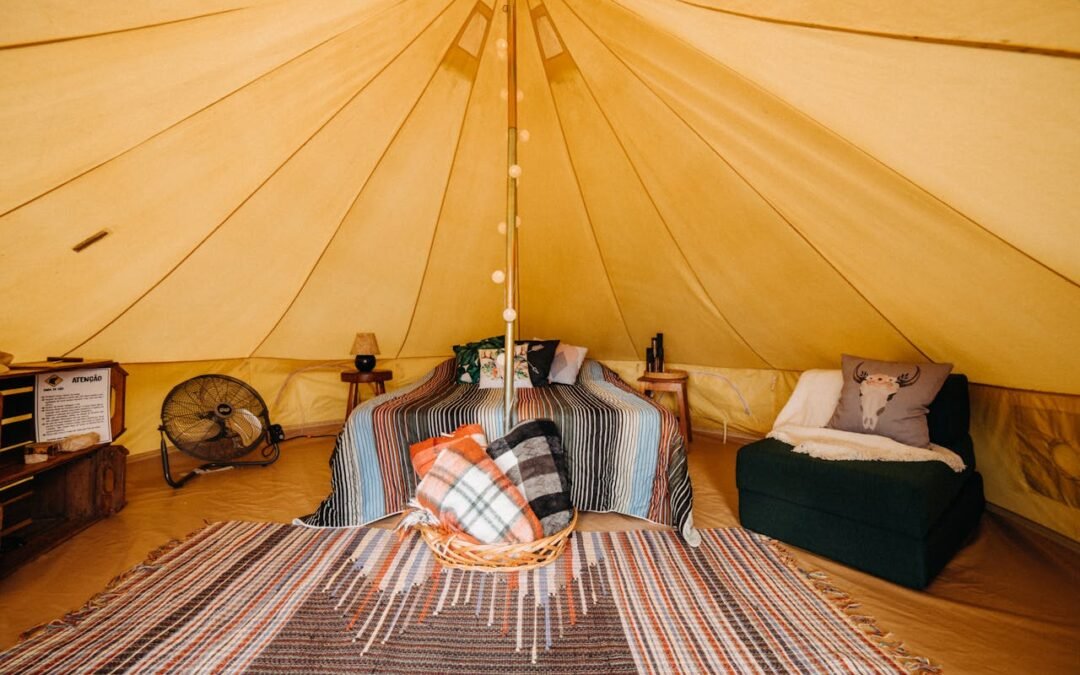In crisis zones, where safety and comfort are vital, innovative tent designs are making a significant impact on the lives of refugees. Modern refugee tents are now equipped with advanced features that address protection, durability, and livability.
One key innovation is the integration of weather-resistant materials. These materials are designed to withstand extreme weather conditions such as heavy rain, scorching heat, and cold. They ensure that refugees have a safe and stable shelter, no matter the climate. Another advancement is the use of fire-retardant fabrics, which significantly enhance safety in crowded camps where fire hazards can be a concern.
Comfort is also a priority in tent design. Modular layouts allow for better space utilization, giving families privacy and a sense of normalcy. Improved ventilation systems ensure fresh air circulation, reducing the risk of respiratory issues. In addition, tents with built-in insulation help maintain a comfortable indoor temperature, whether in hot deserts or cold mountain regions.
1. How Advanced Tent Materials Improve Durability and Safety in Refugee Camps
Advanced tent materials are transforming the landscape of refugee camps by significantly enhancing both durability and safety. Modern tents are made from high-performance fabrics such as reinforced polyester and PVC-coated materials that resist harsh weather conditions like heavy rain, strong winds, and scorching heat. These materials are also flame-retardant, reducing the risk of fire-related incidents in densely populated camps.
Additionally, advanced materials are designed to be lightweight yet robust, making transportation and setup easier while ensuring longevity. Anti-tear technologies prevent rips and punctures, which are common in traditional tents, ensuring that shelters remain intact even in challenging environments. Some materials are treated to resist mold and UV rays, further extending their usability and maintaining a hygienic living environment.
By investing in durable and safe tent materials, humanitarian organizations can provide refugees with reliable protection, promoting their well-being during crises.
2. The Role of Modular Tent Designs in Providing Flexibility and Space
Modular tent designs are revolutionizing the way shelters are organized in refugee camps by offering unmatched flexibility and space optimization. These designs consist of interconnectable units that can be assembled to accommodate families of different sizes or adapted for various purposes such as medical centers, kitchens, or educational spaces.
One of the primary benefits of modular tents is their scalability. As the number of occupants in a camp increases, additional units can be seamlessly added, ensuring no one is left without shelter. These tents are easy to assemble, dismantle, and reconfigure, making them ideal for dynamic situations where needs can change rapidly.
Moreover, modular designs promote better space utilization, creating more organized and functional living areas. With customizable layouts, these tents provide a sense of privacy and personal space, improving the quality of life for refugees. Modular tents are a practical and versatile solution for addressing the evolving needs of displaced communities.
3. Innovations in Ventilation and Insulation for Refugee Tents
Innovations in ventilation and insulation are key to improving the livability of refugee tents, especially in regions with extreme weather conditions. Modern tents now feature advanced ventilation systems, including strategically placed mesh panels and adjustable vents that promote air circulation and reduce indoor heat buildup. This ensures a more comfortable living environment, particularly in hot climates.
On the insulation front, cutting-edge materials like thermal liners and reflective fabrics are being used to regulate temperature. These materials keep the interior warm during cold nights and cool during the day, reducing the reliance on external heating or cooling systems.
Some tents also incorporate double-layered walls and insulated flooring, which minimize heat transfer and provide better protection against environmental elements. These features not only enhance comfort but also contribute to energy efficiency, making life easier for refugees while reducing operational costs for aid organizations.
4. How Smart Tent Features are Enhancing Comfort and Livability for Refugees
Smart tent features are redefining the refugee shelter experience by introducing innovative technologies that prioritize comfort and livability. These tents are equipped with integrated solar panels that provide sustainable energy for lighting and charging devices, allowing refugees to stay connected and safe after dark.
Some smart tents include built-in sensors that monitor temperature and humidity levels, enabling real-time adjustments for a more comfortable environment. Others have water collection systems that harvest rainwater, ensuring a consistent supply of clean water for daily use.
Additionally, smart tents often come with modular interiors that can be reconfigured to suit individual needs, providing a sense of personalization and privacy. These advancements make refugee life more manageable, fostering a sense of dignity and hope even in difficult circumstances.
5. The Impact of Sustainable Tent Designs on Long-Term Refugee Support
Sustainable tent designs play a crucial role in ensuring long-term support for refugees by reducing environmental impact and operational costs. These tents are made from recyclable and biodegradable materials, aligning with global efforts to promote eco-friendly practices in humanitarian aid.
Solar-powered lighting and energy-efficient designs minimize the need for external energy sources, making camps more self-sufficient. Water-resistant and durable fabrics reduce the frequency of replacements, cutting down on waste and expenses.
Moreover, sustainable tents are designed with multi-purpose functionality, allowing them to be repurposed for community centers, clinics, or storage facilities once the immediate need for shelter subsides. By prioritizing sustainability, these innovative designs not only address the current needs of refugees but also contribute to long-term resilience and resource conservation.

